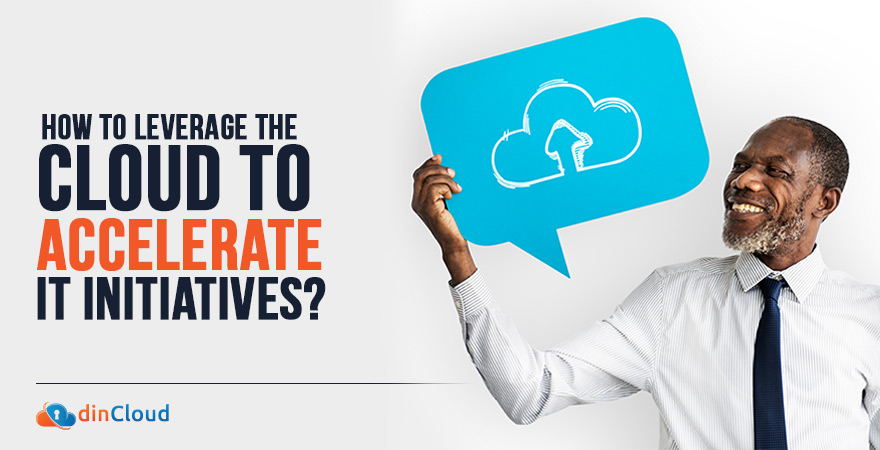Business leaders are constantly under pressure to improve organizational efficiency and spearhead IT initiatives. At the end of day, what’s sought from all this effort is that processes become more streamlined and costs are reduced.
Change the Mindset from CapEx to OpEx
Before you can initiate any notable IT initiative across an organization, the foremost thing that’s required is a new mindset altogether. To start and reap the benefits of digital transformation, organizations need to switch their cost model first.
Also Read: Cloud Computing, Robotics and AI Synergize to Transform Chemistry
Typically, enterprises stick with on premise IT infrastructures on the common pretext of improved security and control. If implemented without proper thought and planning, these factors can fade away in no time.
In doing so, they ignore the drawbacks of on premise IT infrastructures. The foremost factor is the huge upfront capital expense (CapEx) on establishing such a mechanism. Then, you need both human and financial resources to keep the system up and running.
Now, imagine a shift to a Cloud based infrastructure, that’s sourced from a third party Cloud Service Provider (CSP) like dinCloud. By doing so, you firstly migrate your business from a CapEx model to purely an operating expense (OpEx) model.
Also Read: Mitigate your Ransomware Risk with Cloud Backup and Business Continuity
Factors to Consider in a Cloud Migration
Now that we have made a case for leveraging the cloud for IT transformation, let’s discuss key factors you should consider in the process.
Cyber Security
When moving to the cloud, you will be entrusting your data to a Cloud Service Provider (CSP) like dinCloud. You will have to realize that cloud security works under a “shared responsibility model”. However, this area will need specifics.
Also Read: How to Differentiate DaaS from VDI and Which is the Better Choice?
You must choose a CSP that has a robust cyber security posture at the cloud infrastructure level. If your CSP’s security extends to your endpoint devices, this can be a worthwhile investment. You should clearly jot down your responsibilities and those of the CSP.
Regulatory Compliance
Now, regulatory compliance has become a much more serious concern than simply losing few customers. There is a very heavy financial and penal cost to non compliances related to data security as well as privacy.
When planning a cloud migration, you will have to sit with your industry’s regulators and CSP to determine any gaps in regulatory compliance. It is much preferable if your CSP has third party certifications for security and privacy, as is the case with dinCloud.
Also Read: State of Cloud Security in Multi Cloud Environments
Cloud Migration Strategy
Once you have laid down your cloud migration objectives and selected the right CSP from the available alternatives, the next most crucial step is to evolve a comprehensive cloud migration strategy that will serve as a benchmark during the entire migration.
Building Trust in the Cloud
This will be a very crucial phase of your cloud journey and there are two key components of this task. Firstly, you will have to change the existing mindset of your own IT personnel who may view a move to the cloud as a threat to their existence.
With these concerns out of the way, you will have to proceed towards your employees, who will ultimately be the end users of the cloud infrastructure. You will have to build their trust in the cloud by conveying benefits inherent in the technology.
Also Read: dinCloud a Leading Service Provider in the DaaS Market for 2020
Understanding Cloud Costing
Cloud powered solutions of today are not a one size fits all proposition. Instead, there is a wide range of Cloud Service Providers (CSP) and even within a CSP, there is a wide range of packages or options to choose from.
Once you have identified the cloud solution that meets your performance and workload criteria, the next major step will be digging deep into the costing part. Remember, the costing of most CSPs may get very tricky once you go into the details.
Also Read: How Cloud and Remote Access are Key to Business Continuity (BC)?
The foremost aspect of cost is your cloud provider’s costing model. You can divide this into two broad categories. Some CSPs will bill you on month end basis, while others will charge you on a “pay as you use” basis.
Apart from this main distinction, there may be additional charges that will be attracted due to certain special conditions such as bandwidth fees or data migration charges etc. You must clarify these aspects before committing to any cloud solution provider.
What makes dinCloud’s services stand out from the competition is our Flat Rate Monthly Subscription model that takes out all the guesswork from your cloud bill. Secondly, at dinCloud, we don’t have any hidden fees such as the ones cited above.
Conclusion
The cloud is an ideal platform to completely transform your IT infrastructure, both in the short and long term. However, the true benefits of the cloud are contingent upon selecting the right Cloud Service Provider (CSP) for your needs.
dinCloud offers a reliable, secure and robust cloud infrastructure that can be leveraged for Hosted Virtual Desktops (dinHVD), Virtual Servers or Virtual Databases. Contact Us for any further questions you may have about transitioning to our cloud services.



